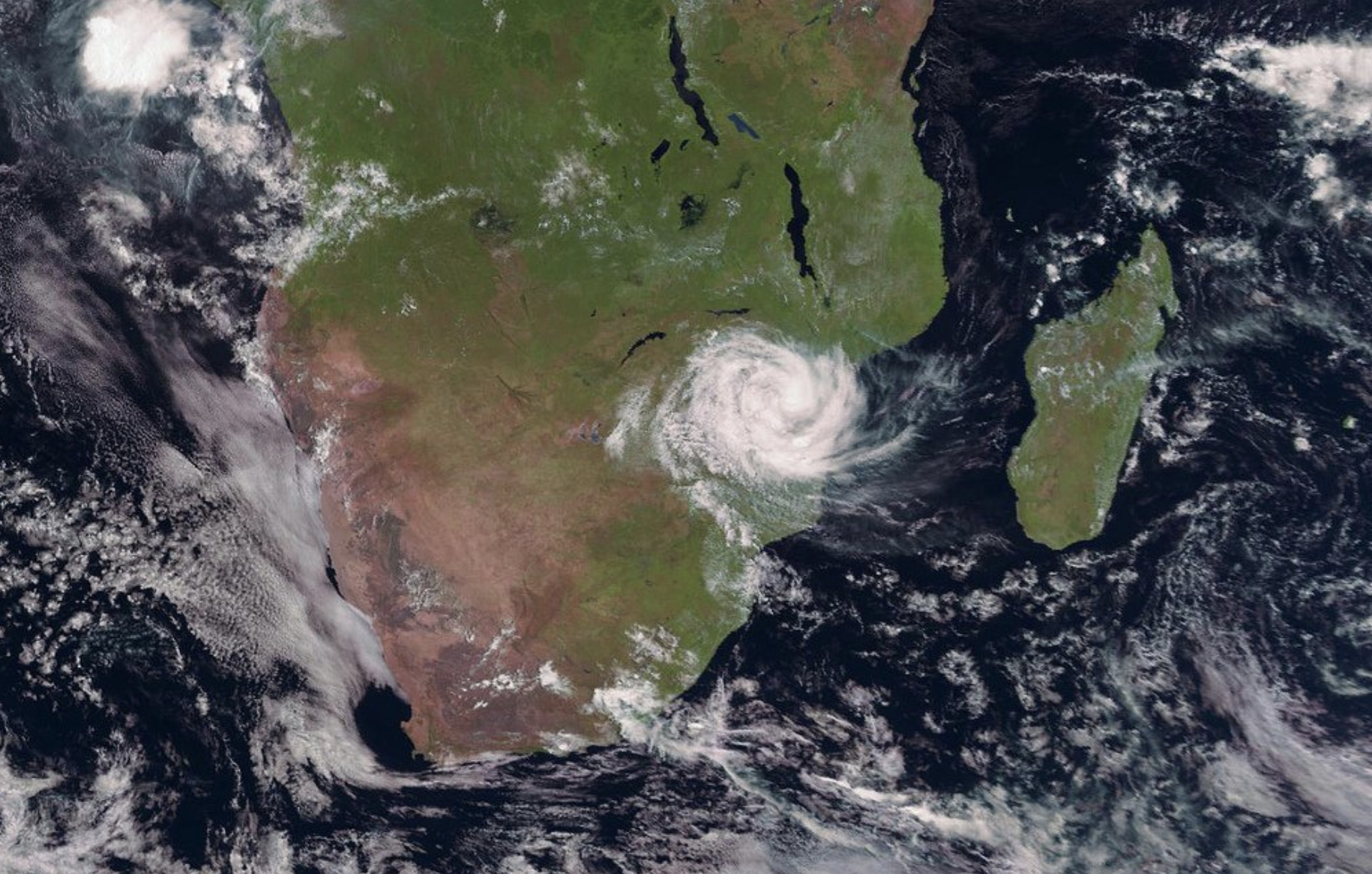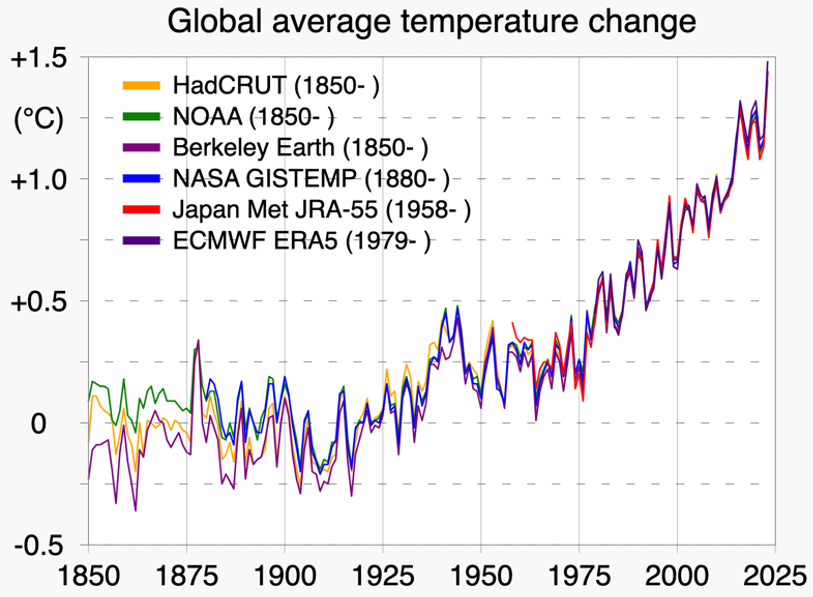 Climate change is expected to increase the intensity of extreme weather events like the tropical cyclone Ida — one of the worst tropical strom to hit Africa and the southern hemisphere. Photo: ©EUMETSAT 2019
Climate change is expected to increase the intensity of extreme weather events like the tropical cyclone Ida — one of the worst tropical strom to hit Africa and the southern hemisphere. Photo: ©EUMETSAT 2019
Key concepts and definitions
This section introduces important Climate System concepts and definitions. Reporting on climate change and health, two complex issues, can be challenging. You don’t have to be an expert in either field, but you do have to know and understand the terminology. The concise and clear explanations of the main concepts will help you to clear confusion about climate change, give the facts about the earth’s climate and report with confidence.
What is weather?
Weather refers to the short-term atmospheric conditions in a specific location at a given time, typically spanning hours to days. The conditions include temperature, humidity, precipitation (rain, sleet, snow,), wind speed and direction, cloud cover, and atmospheric pressure. Weather can vary widely from day to day or even hour to hour, making it unpredictable in the short term.
What is climate?
Climate is the average weather over a long time (30 – 50 years) in a region.
What is climate variability?
Climate variability refers to the natural fluctuations and changes in climate conditions over various time scales, ranging from months to decades.
It encompasses short-term variations in weather patterns and atmospheric conditions but also includes longer-term changes in climate averages and extremes.
Climate variability can occur due to natural phenomena such as El Niño and La Niña events, solar radiation variability, volcanic eruptions, and ocean-atmosphere interactions. El Niño, which changes temperature, rain and wind patterns in many regions over about 2 – 7 years, is a good example of natural climate variability, also called natural variability.
What is climate change?
Climate change refers to systematic and long-term shifts – decades to centuries – in the earth’s climate. These include changes in temperature, rainfall patterns and extreme weather events. Unlike climate variability, these events are caused by human activities such as burning fossil fuels and deforestation. These human activities release an overabundance of greenhouse gases (see section 1.2) into the atmosphere, which trap heat leading to global warming. Climate change means more frequent and intense heatwaves, droughts, floods, hurricanes, wildfires, cyclones, rising sea levels and melting ice. These extreme weather events harm ecosystems, economies, and human societies, affecting sustainable development, food security, and public health.
How can we be sure climate change is real?
Scientists use statistical tests to determine the probability that changes in the climate are within the range of natural variability — like the statistical tests used in clinical trials to determine whether a positive response to treatment is likely to have occurred by chance. They say, there is a less than 1% chance that the warming of the atmosphere since1950 could be the result of natural climate variability.
The US National Aeronautics and Space Administration (NASA) and the Intergovernmental Panel on Climate Change (IPCC) say that the large majority – 99% of climate scientists who publish studies in scientific journals – agree that climate change and global warming is real and that humans are the main drivers.
While the minority, often called climate change denialists, disagree and spread misinformation, it’s important to remember that credible and reputable scientists always focus on the evidence and not opinions.
The graph below shows the correlation of measured global average temperature, from several different scientific organizations. They agree temperatures are rapidly increasing.

Source: RCraig09, CC BY-SA 4.0 <https://creativecommons.org/licenses/by-sa/4.0>, via Wikimedia Commons
The IPPC is unequivocal that human-caused climate change is real. Watch this IPPC video:
Key takeaways
- Climate change, climate variability, and weather are all aspects of Earth’s atmospheric conditions but, they differ in their scope, timescales, and underlying causes.
- Weather refers to short-term conditions, while climate variability and climate change involve longer-term fluctuations in Earth’s climate system, with climate change showing significant climate differences to past decades and centuries.
- Weather and climate variability are a natural part of the planet’s climate system, while climate change is due to human actions.
- Remember: weather can change from minute to minute, hour to hour and day by day. Climate is the average of this weather calculated over a 30-year period.
Here is a video showing the differences between climate trends and variation (climate vs variability and weather). It is important as few people understand the difference between climate and variation (weather). Not understanding or explaining the difference can lead to spread of misinformation and a lack of preparedness to take action to mitigate climate change.
Source: Animated short on statistics from Norwegian infotainment program Siffer. Produced by TeddyTV for NRK. Animation by Ole Christoffer Haga
Here are some key terms every journalist should know about climate change:
Adaptation
Action that helps cope with climate change’s effects – for example, building barriers to protect against rising sea levels, or converting to crops capable of surviving elevated temperatures and drought. Adaptation refers to activities that make people, ecosystems, and infrastructure less vulnerable to the impacts of climate change. This includes things like building defences to protect coastal areas from rising seas, switching to drought or flood resistant crop varieties, and improving systems to warn of heat waves, disease outbreaks, droughts and floods.
Mitigation
Action that will reduce the overall concentration of greenhouse gas emissions in the atmosphere. This includes efforts to change from fossil fuels to renewable energy sources such as wind and solar, or to improve energy efficiency. In also includes efforts to plant trees and protect forests, or to farmland in ways that prevent greenhouse gases from entering the atmosphere.
The United Nations Framework Convention on Climate Change (UNFCCC) is an international treaty among countries to combat “dangerous human interference with the climate system”, in part by stabilizing greenhouse gas concentrations in the atmosphere.
Conference of the Parties (COP)
The COP is the supreme decision-making body of the Convention. All States that are Parties to the Convention are represented at the COP, at which they review the implementation of the Convention and any other legal instruments that the COP adopts and take decisions necessary to promote the effective implementation of the Convention, including institutional and administrative arrangements.
The Intergovernmental Panel on Climate Change (IPCC)
Created in 1988 by the World Meteorological Organization (WMO) and the United Nations Environment Program (UNEP), it’s the main scientific authority on climate change. Its goal is to provide governments at all levels with scientific information that they can use to develop climate policies. The IPCC does not do research but gives regular assessments of the scientific basis of climate change, its impacts and future risks and its options for mitigation and adaptation.
“The scientific evidence is unequivocal: climate change is a threat to human wellbeing and the health of the planet. Any further delay in concerted global action will miss the brief, rapidly closing window to secure a livable future.” – IPCC 2013





